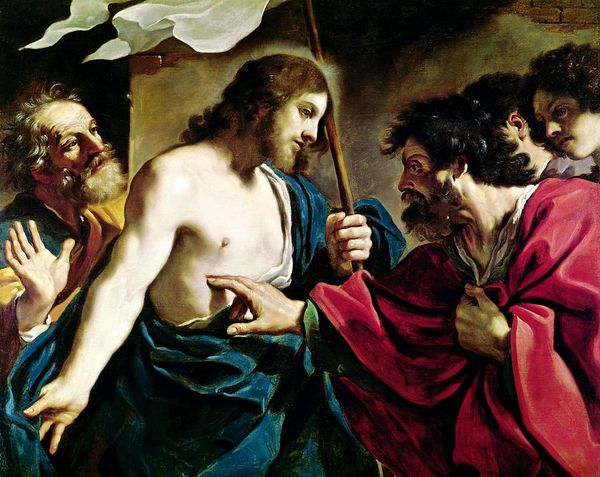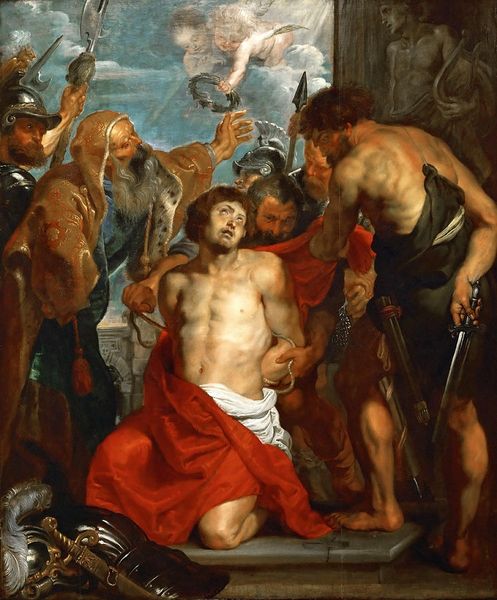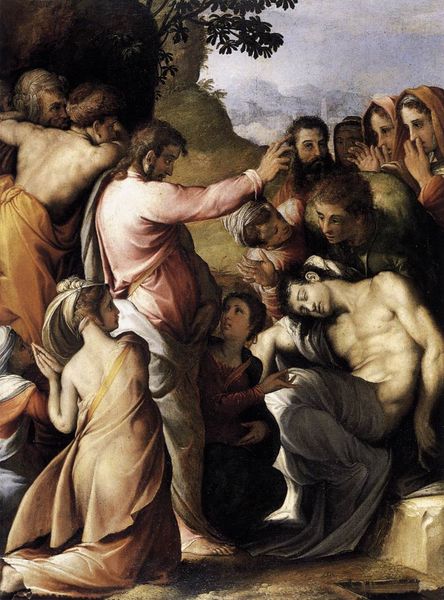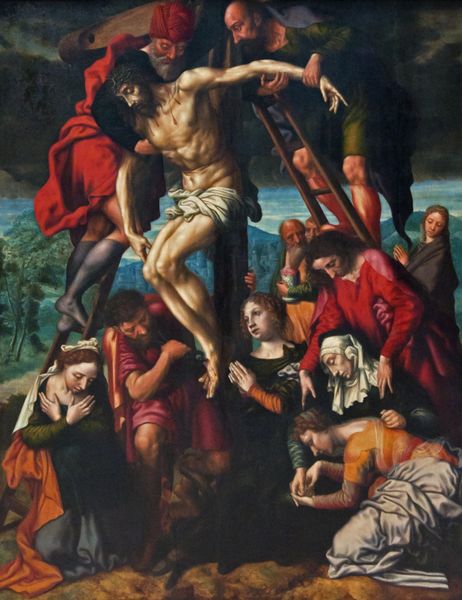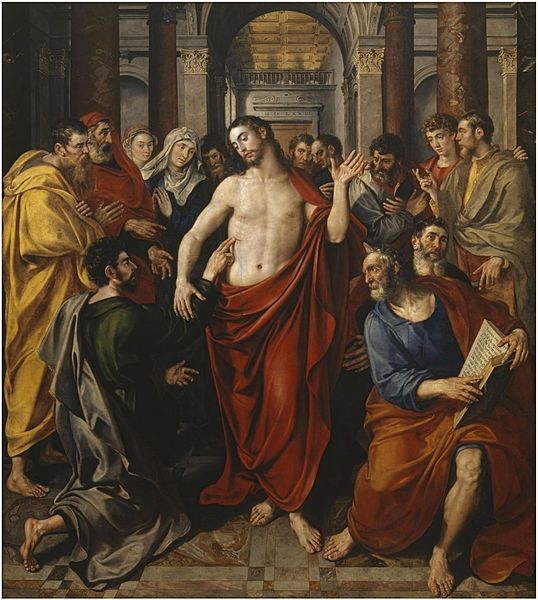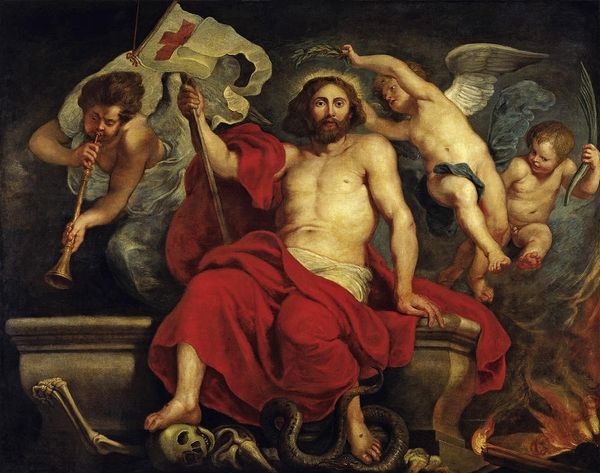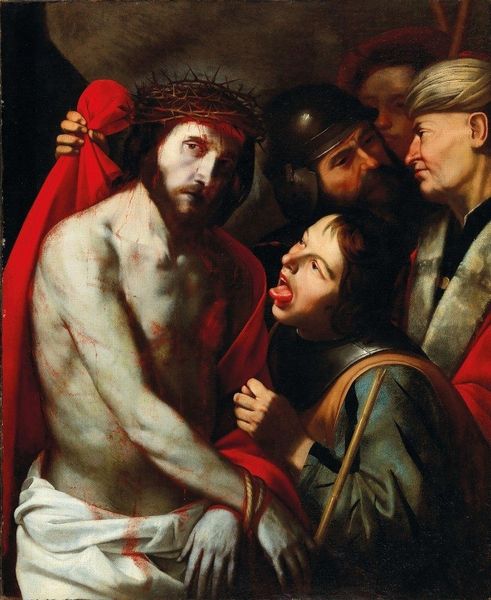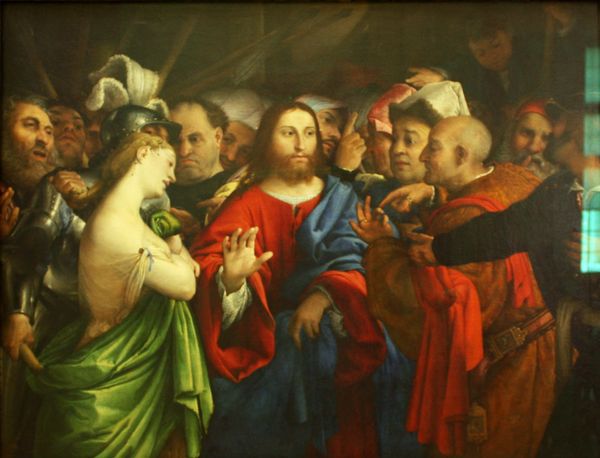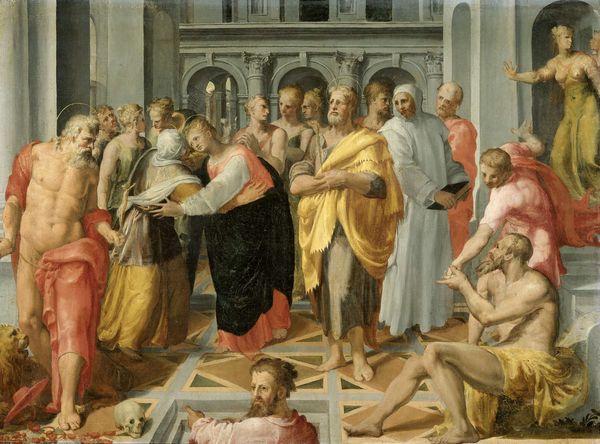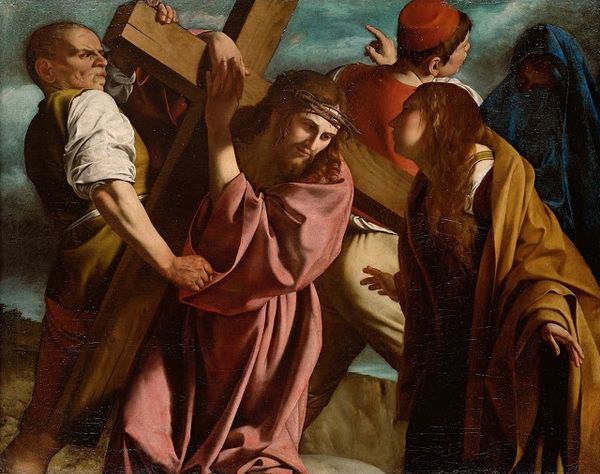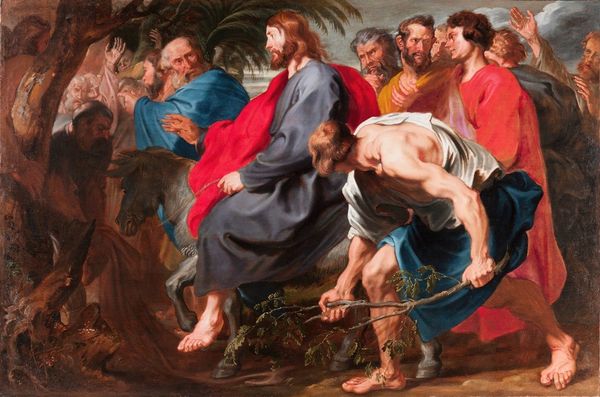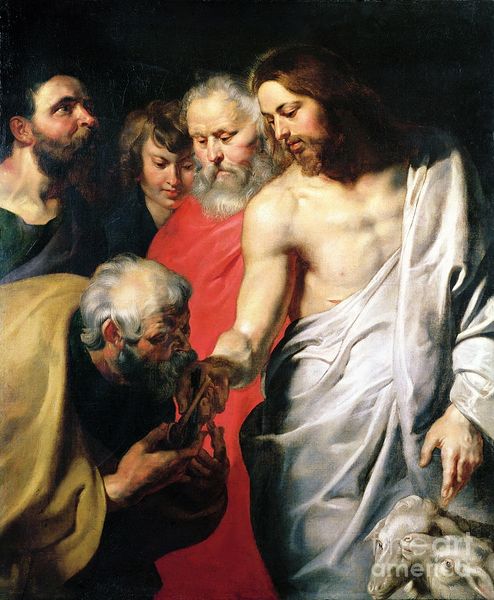
oil-paint
#
portrait
#
narrative-art
#
oil-paint
#
mannerism
#
figuration
#
oil painting
#
mythology
#
painting painterly
#
history-painting
Copyright: Public domain
Curator: Here, in the Louvre, we have Francesco Salviati's oil painting, "The Incredulity of St. Thomas," painted around 1547. Editor: Wow, talk about an awkward family reunion! The figures are so dramatically lit, everyone looks utterly shocked or deep in concentration, bathed in this otherworldly glow. Curator: Indeed. Salviati captures a very specific moment from the Gospels—Christ revealing his wounds to Thomas after the Resurrection. The Mannerist style is very prominent here, in the exaggeration of the figures' anatomy and posing. Note how each figure reacts distinctly, creating a kind of theater of belief and doubt. Editor: That disbelief is palpable, isn't it? Thomas, kneeling, looks almost pained by the invitation to touch the wound. The other disciples, a huddle of whispering concern, they’re all embodiments of human reaction to the impossible. The wound becomes, then, the visible symbol of faith. To see is to believe, but more profoundly, to *feel* is to believe. It also points to the idea of tangible proof versus inner knowing. Curator: Exactly. Salviati isn’t just painting a religious scene, he is delving into the psychological weight of faith, knowledge, and proof. And you can really read a classical influence into the almost staged nature of the figures against that very dark and indistinct backdrop. Editor: But consider also the context, no? The Reformation had really put a stress on individual faith, and images became central to religious life. It's hard to look at a wound but the very idea of experiencing Christ’s sacrifice physically like that... Curator: Absolutely. It is history painting combined with emotional drama. And Salviati executes all of that using expert brushwork and light to elevate it beyond a standard Biblical story. Editor: Well, the man clearly understood the power of images to speak volumes. It’s one thing to preach faith but it is very another thing to create an artwork that makes you feel its disquiet. Curator: I'd have to agree. It's a remarkably powerful and complex exploration of a pivotal religious moment that's continued to inspire conversations, I think it's fair to say. Editor: Precisely, a potent reminder that belief, much like art, resides in the fragile balance between what we see and what we are moved to feel.
Comments
No comments
Be the first to comment and join the conversation on the ultimate creative platform.
